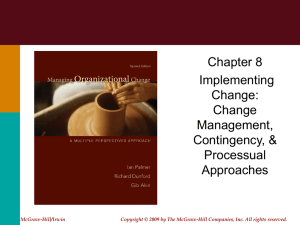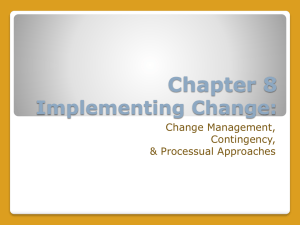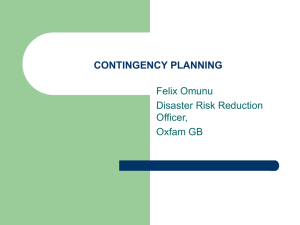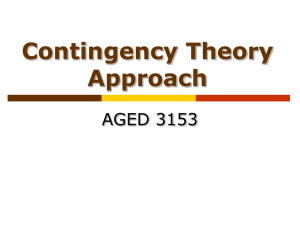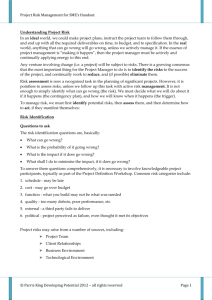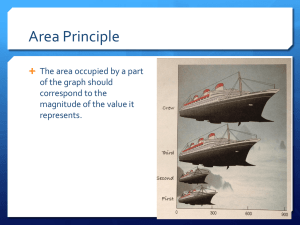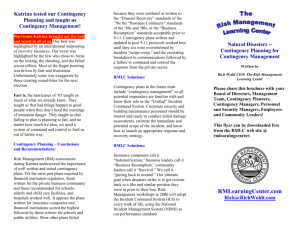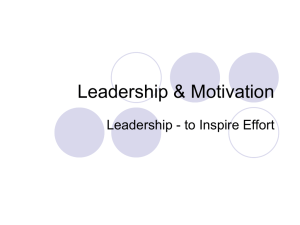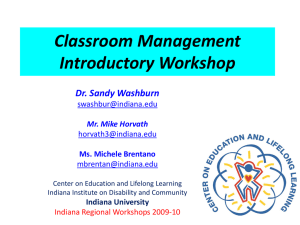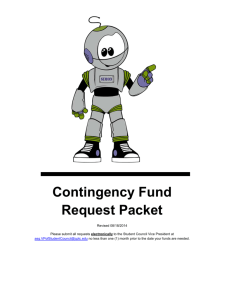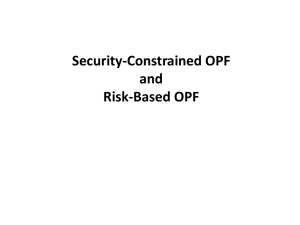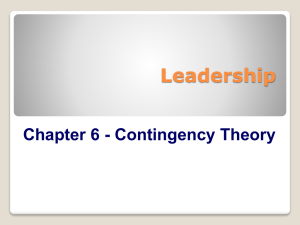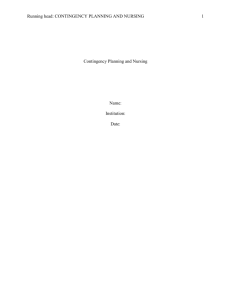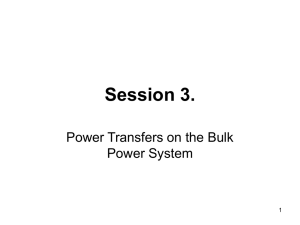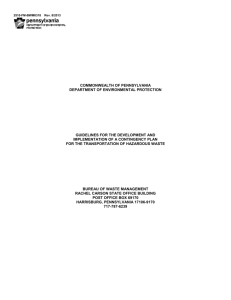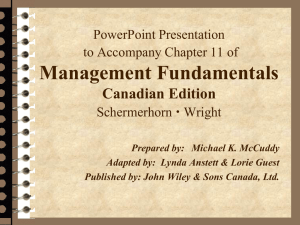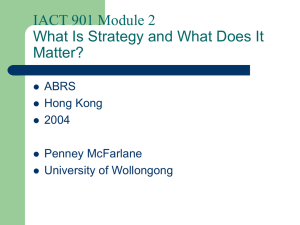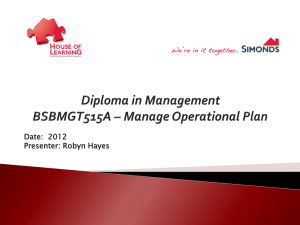MANAGING CULTURE
advertisement
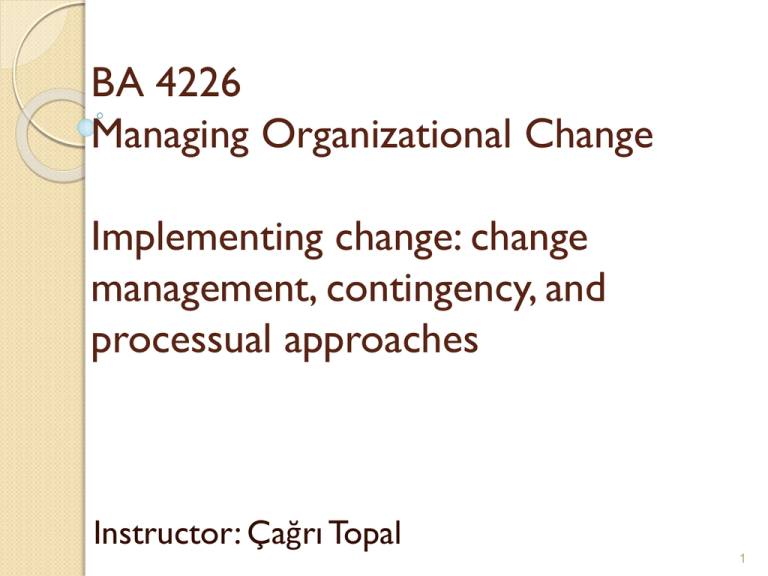
BA 4226 Managing Organizational Change Implementing change: change management, contingency, and processual approaches Instructor: Çağrı Topal 1 Change management: Fundamentals Director image The focus is on strategic, planned, and largescale change Change models include a series of planned steps Change models apply to any kind of change 2 Change management: Assumptions/limitations-1 Steps might be used sequentially or simultaneously All steps should be implemented Steps embodying core elements of managing organizational power, motivating organizational members, and directing organizational transition might be implemented in changing orders Interrelated and sequential phases might include rationalization, revitalization, and regeneration 3 Change management: Assumptions/limitations-2 Implementation depends on implementers Multiple changes may be in progress Steps should be tailored to particular needs Communication should involve involvement Change is not completely manageable Change necessitates experimentation There might be more than one change leader 4 Change management: Kotter’s eight-step model Establish the need for urgency Ensure there is a powerful change group to guide the change Develop a vision Communicate the vision Empower staff Ensure there are short-term wins Consolidate gains Embed the change in the culture 5 Change management: Problems in step-models Sequence of steps Number of steps Duration of steps Resources at steps People at steps One step at a time Steps without feedback 6 Change management vs. OD Change management has a broader scope than OD and considers OD’s central concern, human development, as one feature of organizational change The OD practitioner is a third-party facilitator whereas the change management consultant acts as a technical expert OD is a bottom-up approach whereas change management is a top-down approach 7 Contingency approaches: Fundamentals Director image Successful organizational change outcomes can be achieved The approach for achieving change outcomes depends upon the change context The change context includes the scale of the change and the receptivity of organizational members 8 Contingency approaches: Dunphy and Stace’s model Developmental transitions Task-focused transitions Charismatic transformation Turnarounds Fine-tuning 9 Contingency approaches: Huy’s model Commanding intervention Engineering intervention Teaching intervention Socializing intervention 10 Contingency approaches: Reasons for uncommonness Differing perceptions on contingencies Lack of clear-cut guidelines Lack of managerial skills Perception of inconsistency Possibility of universal aspects 11 Processual approaches: Fundamentals Navigator image Change is a continuous, often political, process Change unfolds contextually Change outcomes are the result of a complex interplay of different perspectives and interests, efficiency concerns, and environmental conditions 12 Processual approaches: Stages Problem sensing Development of concern Acknowledgement and understanding of the importance of the problem Planning and acting Stabilizing change 13 Processual approaches: Lessons-1 Simple linear change recipes should be challenged Change strategies will need to be adapted in light of the reactions and politics they create Change takes time and is unlikely to entail continual improvement Taken-for-granted assumptions need to be questioned along the way Change managers need to learn from stories of experiences of change, including those of individual at all levels 14 Processual approaches: Lessons-2 Training programs need to be aligned with desired changes Communication needs to occur in context The substance of change is itself likely to alter Political processes will be central to how quickly change outcomes occur Change involves interwoven, contradictory processes as well as rewriting of accounts of the past and the future 15
